In this blog, you will learn about different types of marketing research. So, let’s get started.
Would you like to know how, why, and when market research should be used? Do you want to figure out why your customers aren’t purchasing your goods? Do you want to introduce a new product, service, or even a marketing campaign but aren’t sure what your customers want?
To answer the question above, you’ll need help from your customers. But how will you gather that information? Market research is the best approach to gather the answers you need in your organization and many other scenarios.
This comprehensive guide to market research includes a definition, benefits, types of marketing research, and some examples to help you better understand this study.
What is Market Research?
Table of Contents
Market research is defined as performing direct consumer studies to determine the feasibility of a new product or service. Organizations or corporations may use this method to define their target market, gather and document feedback, and make educated choices.
Market research can be carried out in-house by organizations or enterprises or outsourced to firms with experience in the field.
Market research can be conducted through the distribution of surveys, interaction with a sample group, interviews, and other approaches.
The major purpose of market research is to understand or analyze the market for a given product or service in order to forecast how the target audience will react to it. Market research data may be used to change marketing and advertising activities or to identify which products and services consumers value the most.
What Are The Three Key Objectives of Market Research?
Usually, there are three types of objectives in a market research project:
- Administrative: Help a firm or corporation grow by properly planning, organizing, and controlling both people and material resources, thereby meeting all special market needs at the correct moment.
- Social: Providing a product or service required to satisfy a customer’s particular wishes. It should meet the needs and preferences of the client.
- Economical: Determine the economic degree of success or failure a company can have while new to the market or launching new products or services. Offering clarity to all decisions to be taken.
Why is Market Research So Important?
Conducting research is one of the most effective strategies to improve customer satisfaction and grow your business. These are some of the reasons why market research is crucial and should be considered by any company:
- Valuable information: It gives firms information and opportunities regarding the value of existing and new products, allowing them to plan and strategize appropriately.
- Customer-centric: It aids in determining what clients’ requirements and desires are. Understanding customers and their demands can help firms build products or services that best suit them. Marketing is customer-centric.
- Forecasts: Businesses can forecast their production and sales by understanding customer needs. The market research also aids in identifying the best inventory stock levels.
- Competitive advantage: Market research is a critical instrument for comparative studies to keep ahead of the competition. Businesses can develop business strategies to help them stay ahead of the competition. Now we have learned the types of marketing research. So, let’s learn about the types of marketing research.
Types of marketing research
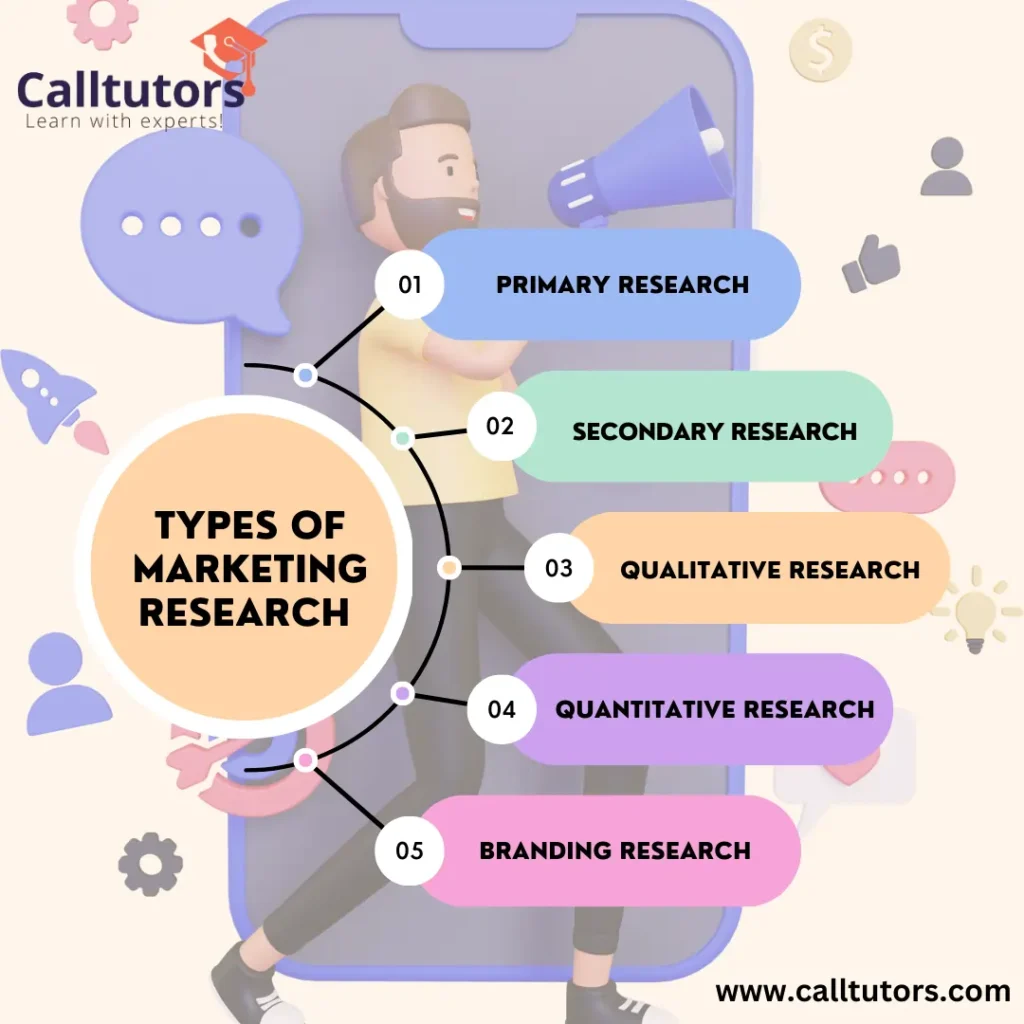
Market research may help you solve problems and lower the risk of making key business choices. Learn about the eight various forms of marketing research that may be used to identify and solve problems in any business.
- Primary research method
- Secondary research method
- Brand Research
- Campaign Effectiveness
- Competitive Analysis
- Consumer Insights
- Customer Satisfaction Research
- Customer Segmentation Research
- Product Development
- Usability Testing
Primary Research Method
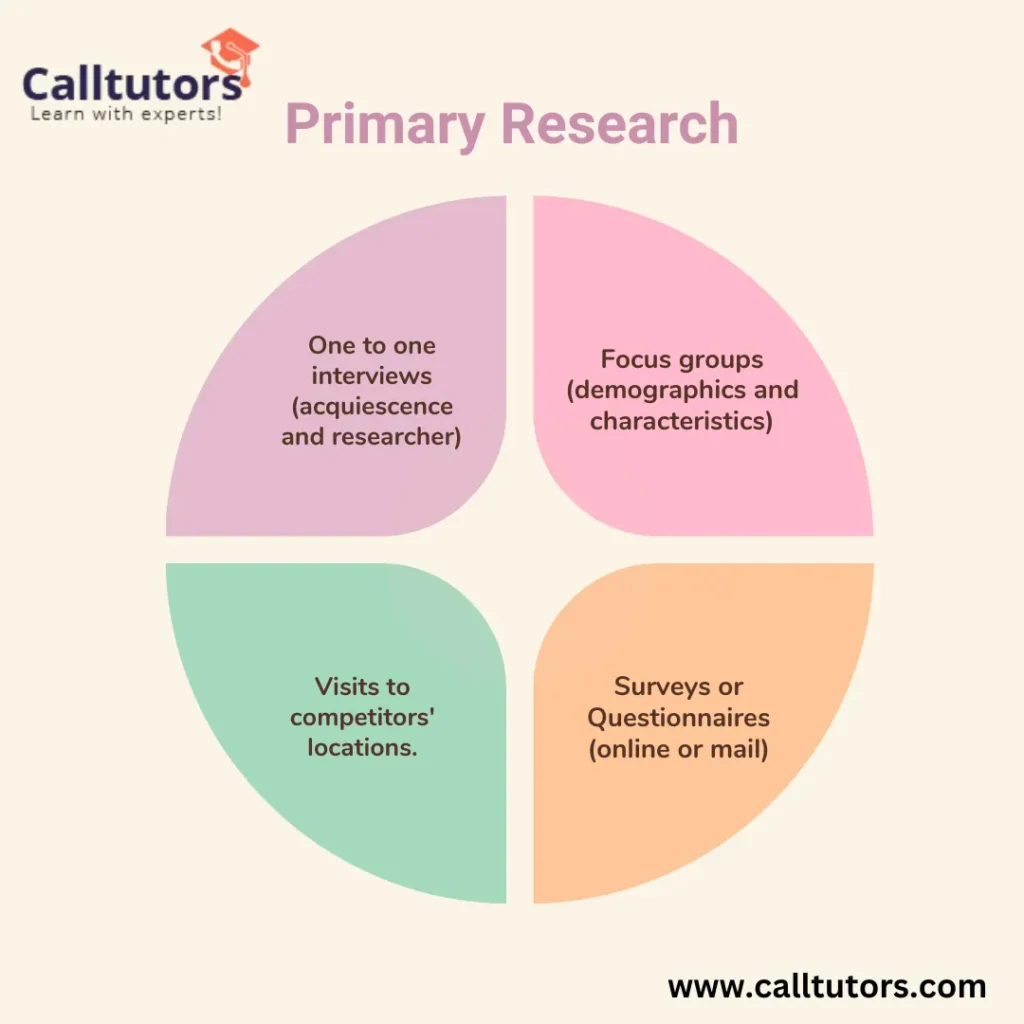
It is the first method of research. Through this marketing research method, you gather all the data from people and go directly to the target market because it is the primary data you create with your own data set.
You’ll get the two types of results by collecting the data with the primary research method. The first is the exploratory data which defines the nature of the trouble, and the second is the conclusive data which is carried out to decrypt an issue. Through this collected data, the participants gathered the data as raw data and then analyzed it for comparisons and trends. These are the types of primary marketing research methods.
- Focus groups
- Interviews (telephone or face-to-face)
- Visits to competitors’ locations.
- Surveys (online or mail)
- Questionnaires (online or by mail)
Secondary Research Method

The second marketing method is secondary research, previously collected, analyzed, and published data. Desktop research can be public domain data from government statistics, think tanks, research centers, etc.
On Google, much information is freely available, so there are fewer expenses associated with this type of secondary research than with primary research strategies.
Secondary research is usually the practice for primary research actions, providing a knowledge base. The data collected may need to give exact details to describe the results, which is where we would use primary market research to enhance understanding.
Qualitative Research Method
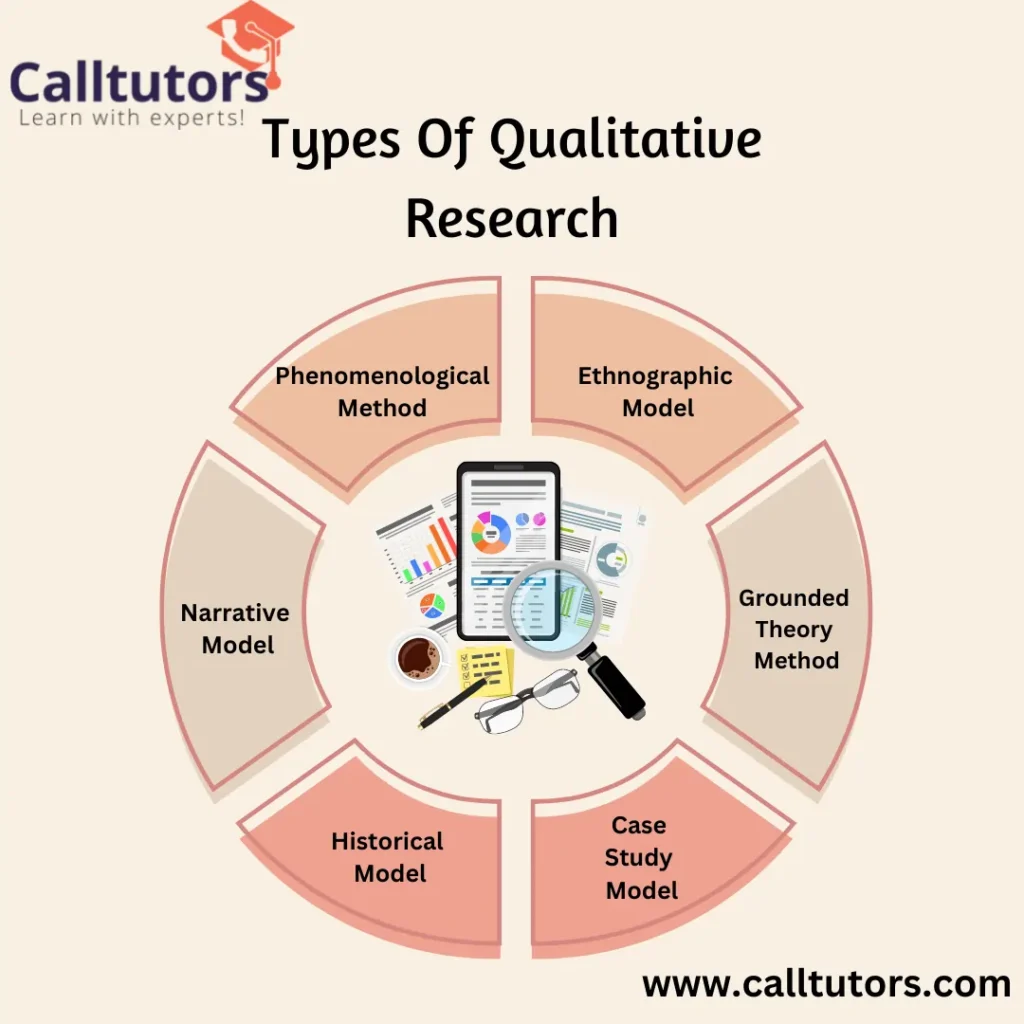
Primary or secondary data collection is known as qualitative research, which is non-numerical and tough to measure.
Researchers gather this market research kind because it can add deeper data.
The qualitative market research method is generally used to summarise and figure, rather than pin-points, an authentic truth controlled by a target market. For instance, I can do qualitative market research to discover a new target market’s reaction to a new product to translate the response into a clear explanation for the company.
Quantitative Research Method
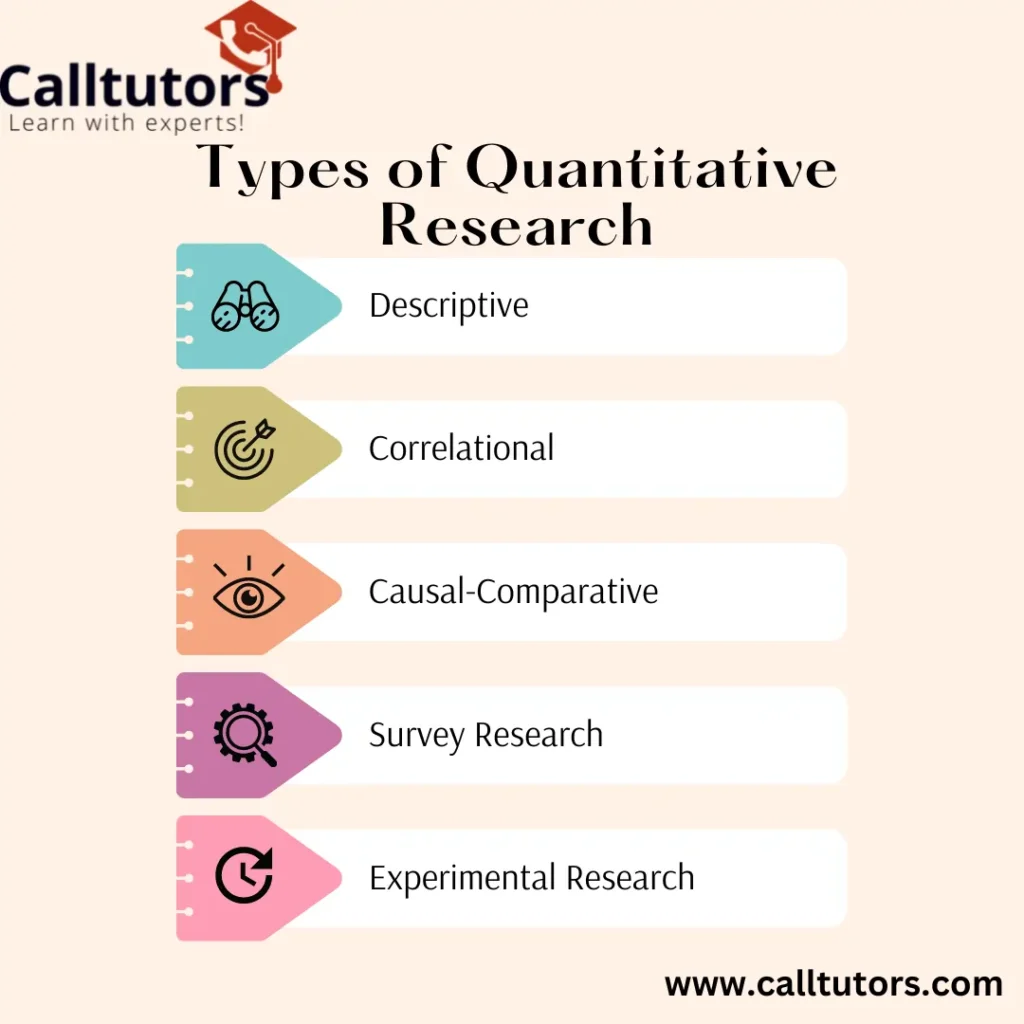
In addition, another method of marketing research is quantitative research. In short, it is gathered from primary or secondary data, and it is collected in numerical form, so that’s the main reason the quantitative data is collected more quickly or efficiently.
Most researchers gather the data with this market research type because it can give one of the best historical benchmarking based on various facts and figures.
It has several methods to gather quantitative data desk research, polls, surveys, financial records, and web statistics. It can be exploratory with little depth at this phase.
It can create the foundation of knowledge. So, all researchers need to investigate beliefs further via qualitative market research.
Brand Research
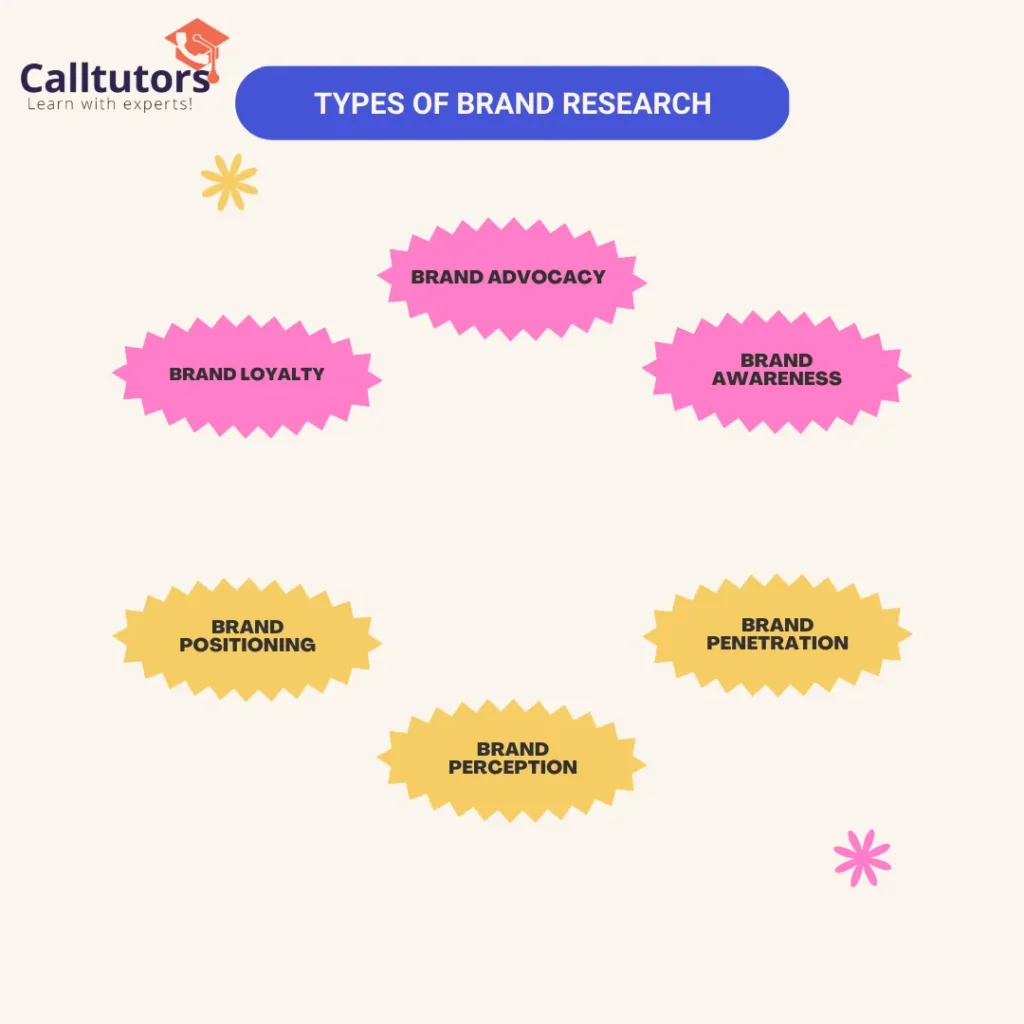
This is the first types is the first type of marketing research. Brand research contributes to creating and managing a company’s brand or identity. The images, narratives, and characteristics people connect with a company are known as its brand. Every outstanding branding agency does extensive research before developing a brand strategy.
When should you use it?
Brand research can be used anytime in a company’s lifetime, from conception to new product launches and re-branding. At least seven different forms of brand research exist:
- Promotion of a brand- how many of your consumers are prepared to refer your business to others?
- Brand recognition- is your target aware of your existence and considers you a viable option?
- Customer loyalty to a brand- are you able to keep your customers?
- Brand awareness- what percentage of your target market uses your product?
- Public perception of the brand- what do people think of your company’s identity of distinguishing characteristics?
- Brand positioning- what is the most effective strategy to distinguish your brand from others in the minds of consumers and explain it memorably?
- Brand value- how much are customers willing to pay for your brand’s experience over another?
How it’s done
A researcher will use various market research methods to examine your and your competitor’s strengths and weaknesses. They will most likely do competitive research to understand the whole market. Focus groups and interviews might be used To learn about their feelings and associations with certain companies.
Market research surveys can help you identify characteristics and benefits that set you apart from your competitors. These are then converted into emotionally appealing consumer language.
Campaign Effectiveness
This is the second form of marketing research. This market research is conducted to discover whether your marketing messages reach the right people and have the desired effect. Campaign effectiveness analysis can help you sell more and save money on client acquisition.
When should you use it?
According to market research firm Yankelovich, inc., people are exposed to up to 5,000 advertising messages per day. Because attention is a limited resource, campaign effectiveness studies should determine how best to spend your advertising budget.
How it’s done
It depends on which stage of the campaign you apply the campaign effectiveness research (preferably, all of them). Quantitative research can acquire a sense of how your target market views advertising and address flaws in the campaign.
Competitive Analysis
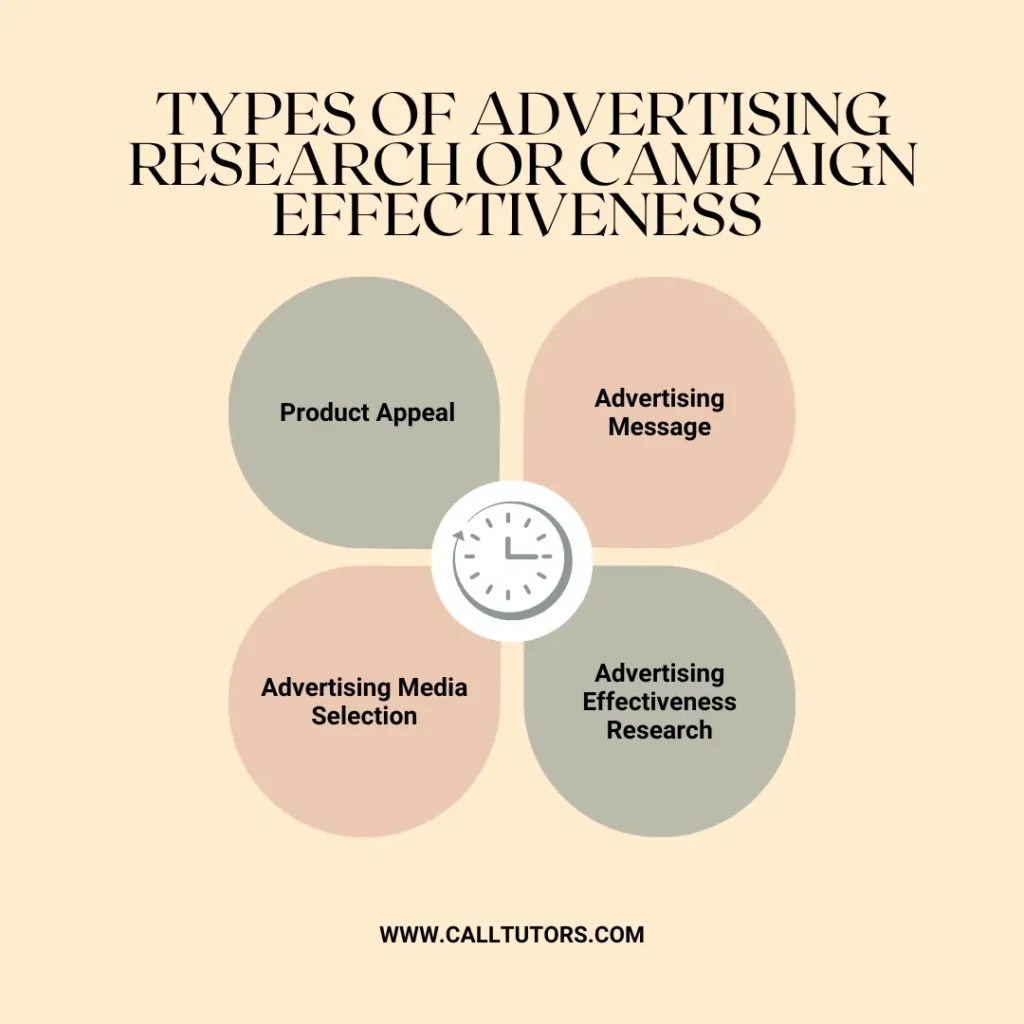
The third form of marketing research is competitive analysis. You may do a competitive analysis to examine your market’s strengths and weaknesses, motivating you to create a competitive edge.
When should you use it?
No business exists in a vacuum- a competitive analysis is essential to business and marketing planning, starting a new business, moving into a new market, or assessing your company’s health.
How it’s done
In general, your researcher will examine a few of your main competitors, such as their marketing strategies, revenue or sales volume, customer perceptions, and so on.
In addition to secondary sources like articles and references, advertising can provide valuable information on the competition However, primary research like mystery shopping and focus groups can shed light on customer service and current consumer expectations.
Consumer Insights
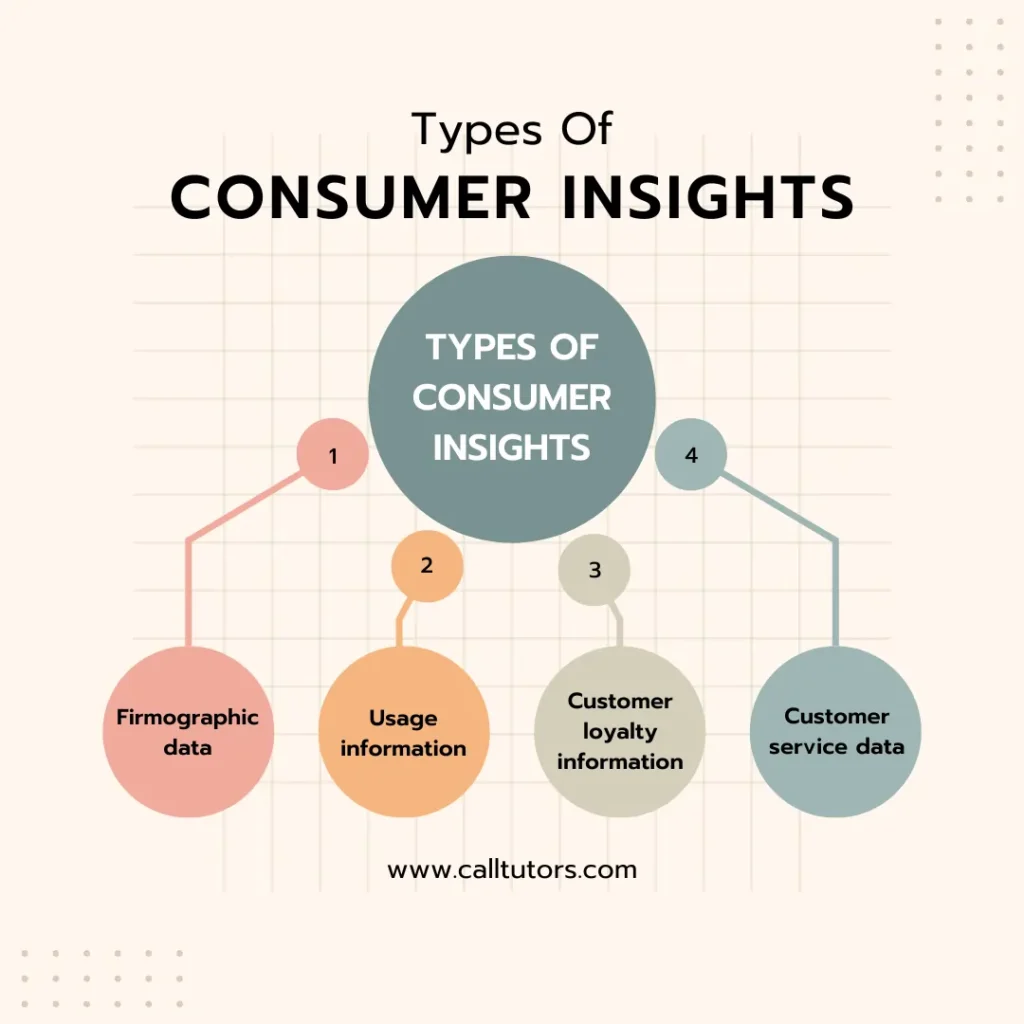
The fourth type of marketing research is consumer insights. Consumer insights research reveals more than who and what your consumers are. By understanding why consumers behave the way they do, you may use them to help you achieve your company’s objectives.
When should you use it?
Creating a strategic marketing plan requires a deep understanding of your customers. With this kind of market research, you can discover what consumers want, spur innovation, personalize your marketing, and solve business challenges.
How it’s done
The purpose of consumer insights research is to understand your customers and target markets in depth. Market research methods include interviews, ethnography, survey research, social monitoring, and customer journey analysis.
You should understand the following characteristics when conducting consumer insights research:
- Buying habits
- Hobbies, interests, passions
- Information about your professional and personal life
- How they consume media and advertisements
Customer Satisfaction Research
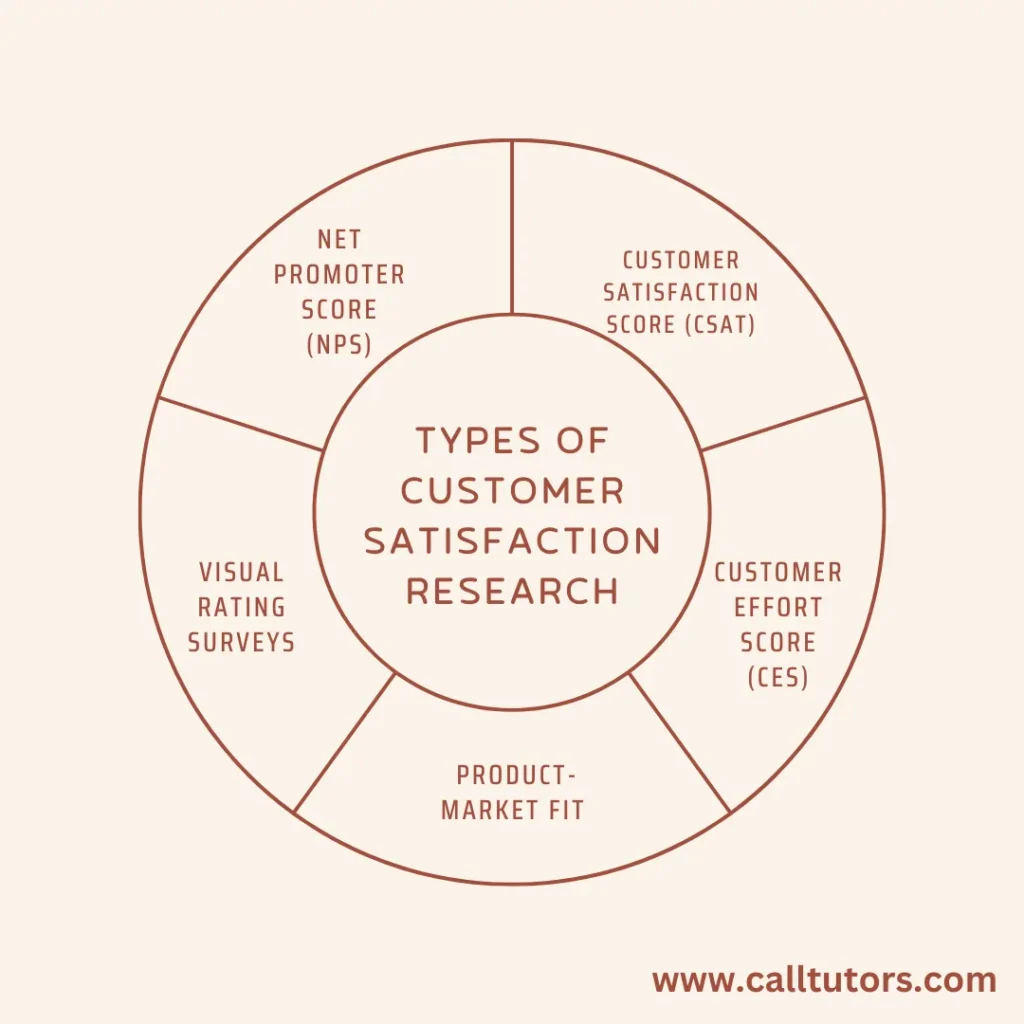
This is the fifth of the marketing research types. It is a type of marketing research that assesses whether products and services meet, exceed, or fall short of consumer expectations.
When should you use it?
Customers are a crucial indicator of customer retention as well as business performance. Understanding what customers like, dislike, and are looking for ways to improve will help you execute successful customer satisfaction research. A company’s quality and design can be viewed through this type of market research and its delivery speed, knowledge, friendliness, and price.
How it’s done
Surveys are a simple way to measure customer satisfaction. NPS and Voice of Customer survey can be used to measure customer loyalty. Customer Effort Scoring measures the satisfaction people have with customer service or problem resolution. CSAT surveys measure customer satisfaction, typically using Likert scales. A customer experience survey can be conducted at different points in the customer’s journey, allowing a deeper understanding of that moment.
Customer Segmentation Research
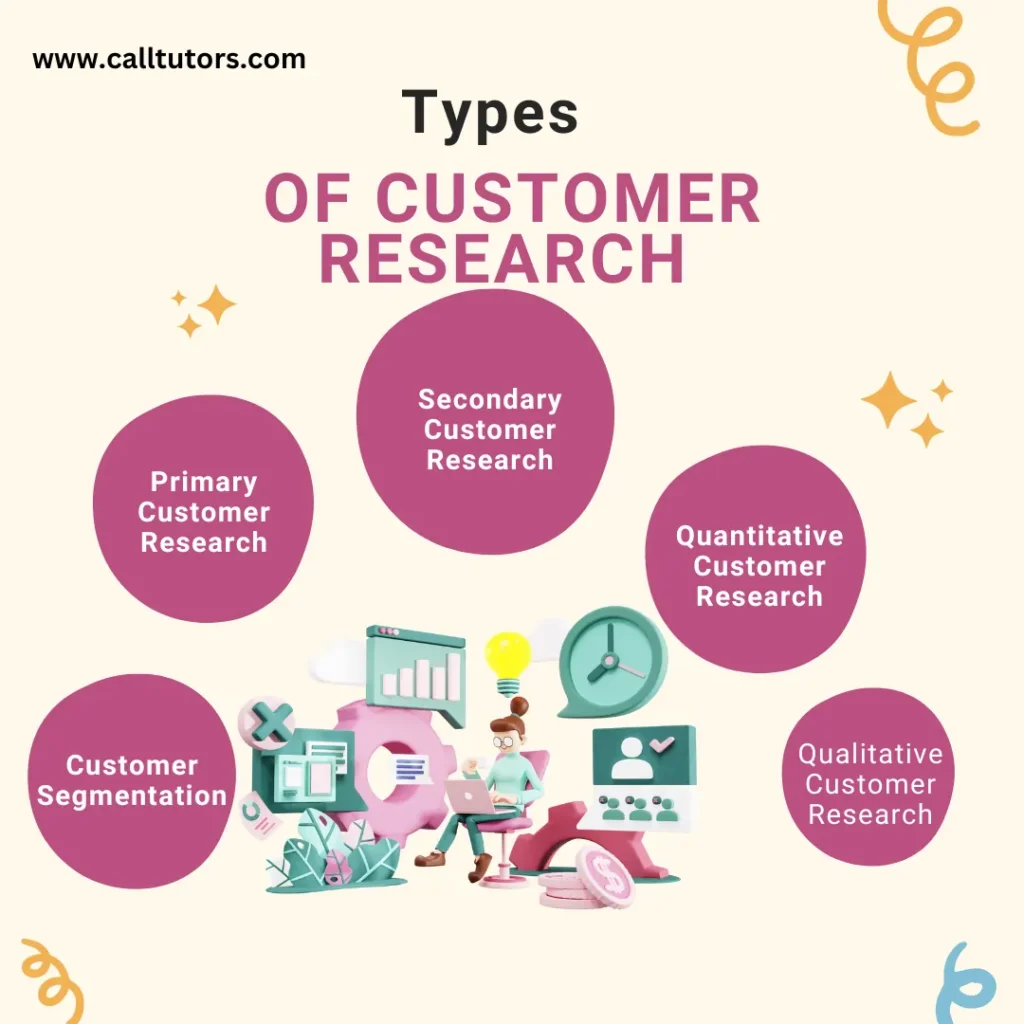
This is the sixth of the marketing research type. By breaking huge markets into tiny groups, segmenting consumer markets helps marketers to target customers with comparable qualities. You can determine how each category affects revenue if you understand how individuals behave in each category.
When should you use it?
Whenever you are ready to offer individualized experiences to your customers, not all customers in your market share are the same. Understanding each specific persona allows you to deliver personalized marketing, build loyal relationships, price products, and services effectively, and predict how new products will perform in each segment.
How it’s done
The characteristics of customers are divided into four categories by market researchers.
- Demographics- Demographic information such as age, gender, family status, education, household income, occupation, etc.
- Geography- The place people live, from cities to countries to whether they live in the city or the suburbs.
- Psychographics- Socioeconomic status, class, lifestyle, personality characteristics, generation, interests, hobbies, etc.
- Behavior- Brand affinity, consumption and shopping habits, spending, etc.
You will identify your existing customers and collect data about them using various market research methods, including surveys, databases, website analytics, and interviews. Ideally, you will obtain as much information about your target audience as possible.
Product Development
This is the seventh type of marketing research. The purpose of market research for product development is to gather consumer information to create and promote products, services, or apps.
When should you use it?
Innovation requires a lot of effort. According to Google, 80 – 95% of new products fail every year. Conducting market research before developing an app or product helps reduce the risk of the product or change going out of business. There are four stages in which market research is useful:
- Conception- As soon as you think of adding something new, market research can uncover market opportunities and provide insights into customer challenges or their needs, so you can find a way to fill the void.
- Formation- Market researchers can assist you in developing a notion that can be tested after you have an idea. You can learn more about pricing strategy, advertising and package testing, value proposition, and other topics.
- Introduction- Market research may help you measure how people feel about a product after it’s out there and adjust your messaging accordingly.
- Continue to improve the product or seek out possibilities to introduce it to new markets.
Depending on the study goal, several market research methods will be used in product development research. A researcher could present product concepts to focus groups and listen to their feedback, conduct interviews to understand more about their problems or do user testing to examine how people interact with an app or website.
Usability Testing
The eighth type of marketing research is usability testing. The purpose of usability testing is to understand how people use your goods in real time. It might include physical objects like a new blender or digital stuff like a website or app.
WWhen should you use it?
When you need to find flaws or bugs in early prototypes or beta versions before releasing them, usability testing comes in handy. It is often significantly less expensive to test a product or service in advance than to remove a defective product from the shelves or lose sales due to poor operation.
How it’s done
Usability tests come in a variety of forms, depending on whether you’re testing a real or digital product.
- Journey testing is witnessing and tracking the client experience on a mobile app or website. This type of research can be completed entirely online.
- Eye-tracking research track people’s gaze patterns. They are usually carried out on websites and apps, but they can also be carried out in stores to see where consumers look while buying.
- Research your abilities. Calculate the learning curve over time to see what issues people have when they repeat the same task.
- Click tracking analyses a website’s linking structure by following users’ actions on the site.
- Checklist testing entails assigning tasks to users and recording or asking them to evaluate their performance.
Conclusion
In this blog, you have learned the types of marketing research in detail. I hope you have understood the types of marketing research easily. And now if you are facing problems writing marketing assignments, then don’t worry we are here to provide you with the best marketing assignment help at a reasonable cost.
FAQs (Frequently Asked Questions)
What are the 2 main types of marketing research?
Market research is divided into two types: primary market research and secondary market research. In primary market research, the company obtains data directly from sources, but in secondary market research, the company relies on already obtained data to understand the target market.
What is the most effective research strategy?
When selecting whether to use qualitative or quantitative data, a good rule of thumb is: If you want to confirm or test something, you should use quantitative research(a theory or hypothesis) If you want to learn more about anything, qualitative research is the way to go (concepts, thoughts, experiences).



